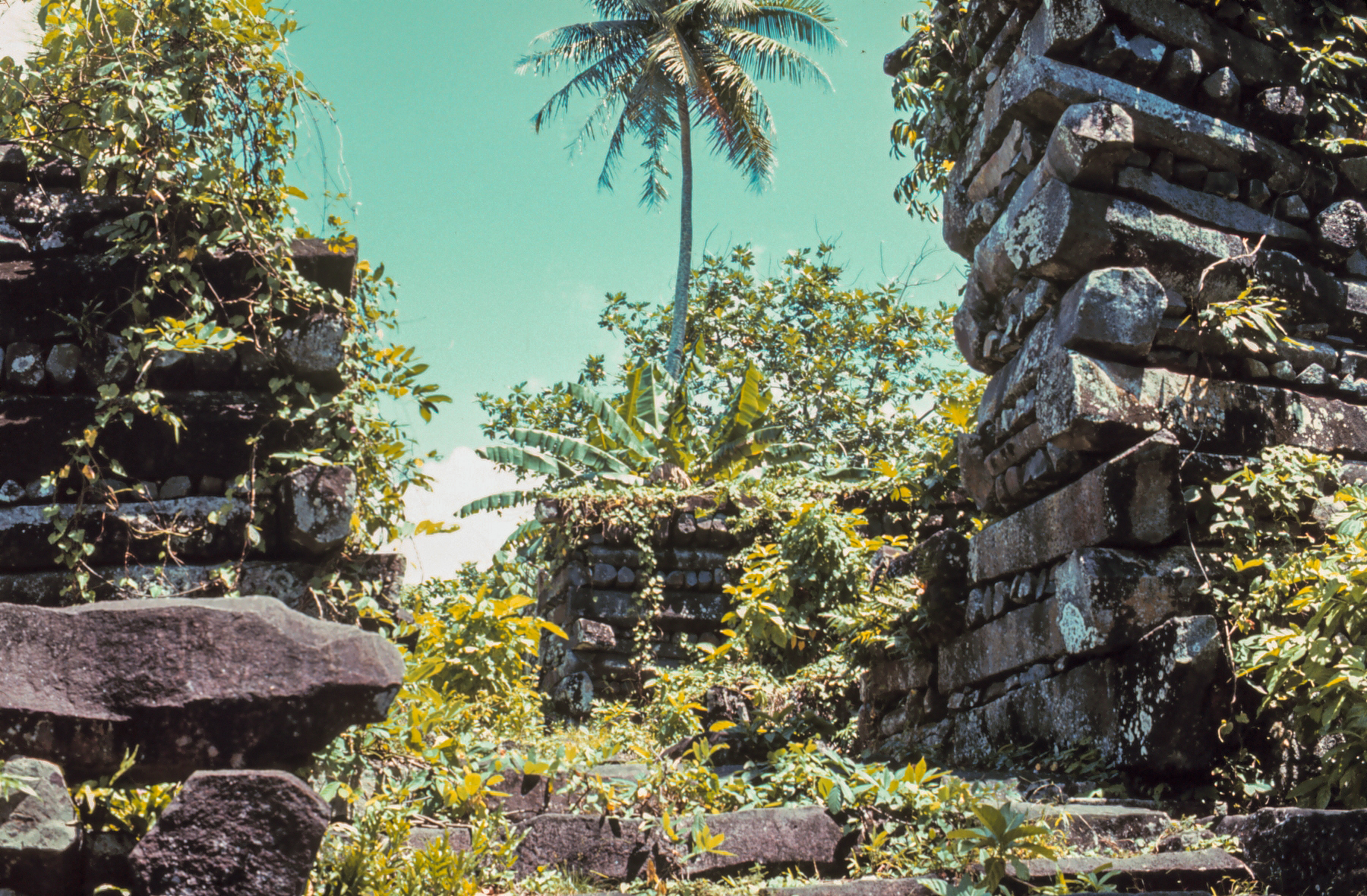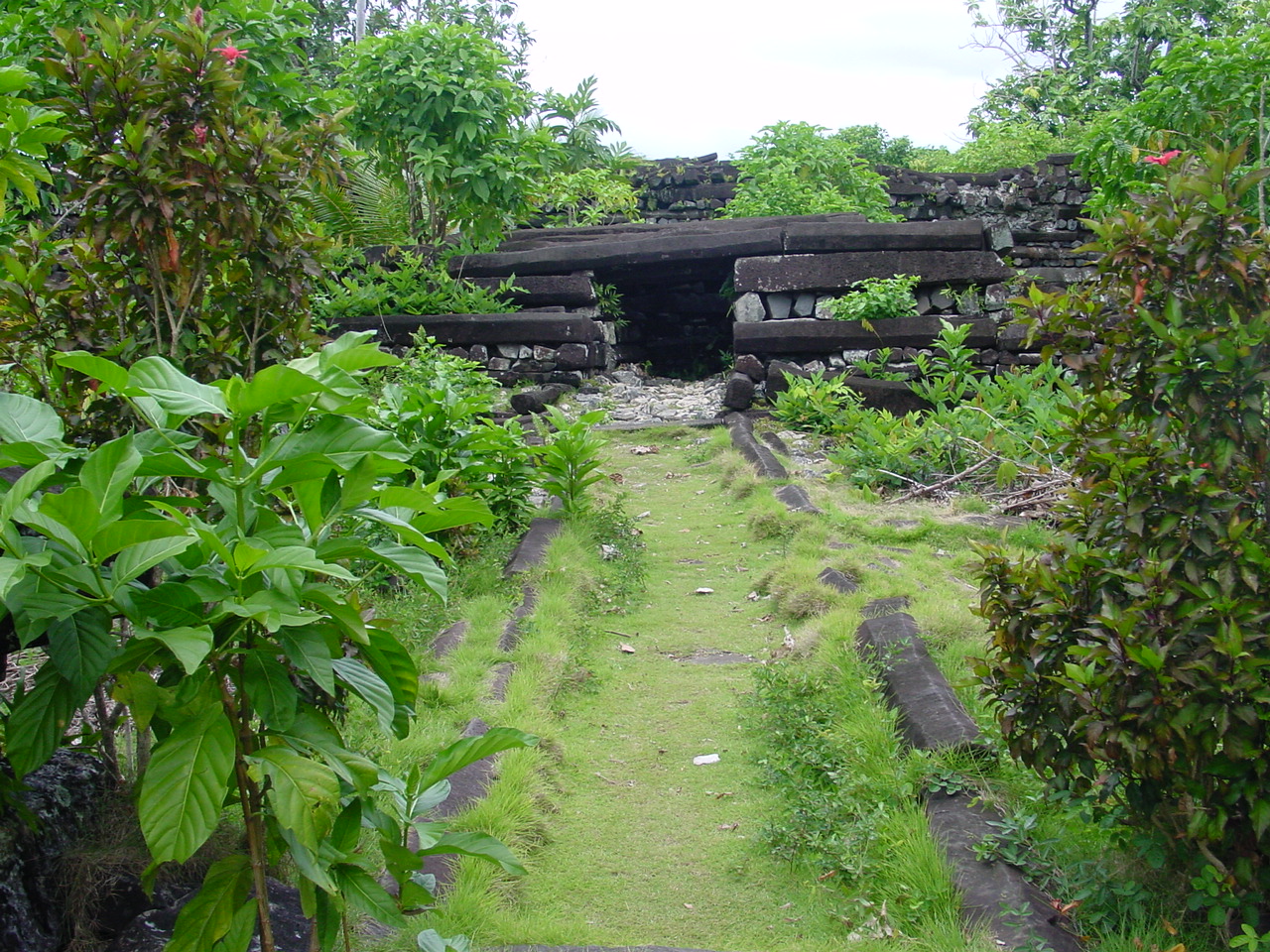
- Nan Madol
- Pohnpei, Micronesia
- Saudeleur Dynasty
- c. 700-1600 CE
- Basalt boulders and prismatic columns

Saudeleurs
- descendants of two brothers founding a religious community
- 6th century CE
- based on adoration of the sea
- built center on patch of coral flats
- ruler unified Pohnpei
- Nan Madol is associated with ascendancy
- ended in early 1600s, split into three groups
- Nan Madol continued as a residential center until early 18th century
- became visited religious center
- Idehd island
- priests fed turtle flesh to the spiritual eel
- Peikapw island
- Isohkelekel resided after overthrowing last king
- later committed suicide after seeing his senile reflection in water??
- culture inspired other monumental buildings in Pacific region

Nan Madol
- located in a shallow lagoon
- largest architectural complex in Oceania
- engineering
- artificial islands
- canals
- give canoes access to ocean
- seawalls and breakwaters to protect from tides
- shows importance of kings
- administrative and ceremonial center
- abandoned when discovered by Europeans
- alternating layers of log-shaped stones and boulders of prismatic basalt
- form log cabin structure with thatch roofs
- oriented NE-SW, facing cooling prevailing winds
- Royal Mortuary Compound has walls that sweep up and outward
- architecturally difficult task
- coral pavement
- used as a cheap building material
- central canal divides sectors

Construction
- stone was split from cliff by rapid heating and cooling of stone
- brought naturally long basalt columns from other side of island
Stone Tomb

- may have been built to honor first chief of Pohnpei
- built out of basalt
- gives evidence that the dynasty ruled from 1180 CE
- earliest islands to be ruled by single chief



